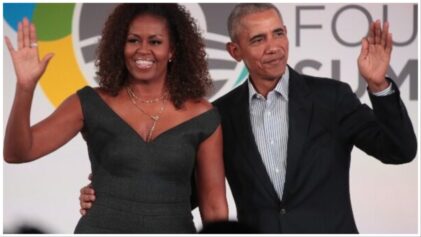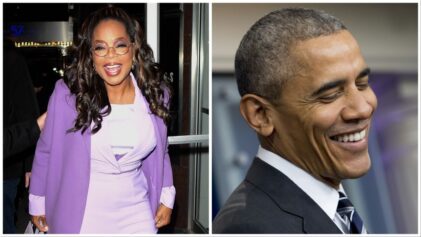Four out of 5 adults in the U.S struggle with joblessness, near-poverty or reliance on welfare for at least parts of their lives, according to new data released by the Associated Press.
The alarming picture of economic insecurity comes as President Obama warns that racial tensions will likely get worse unless the nation improves income inequality and opportunities for upward mobility.
The AP survey also makes it clear that although racial and ethnic minorities are more likely to live in poverty, by overall numbers there are far more whites in poverty—and the race disparities have narrowed substantially since the 1970s, according to census data.
While the government’s data can accurately gauge poverty, it has a much harder time compiling numbers on “economic insecurity.”
Oxford University Press will be publishing data next year based on the new metric that defines ‘‘economic insecurity’’ as experiencing unemployment during the year; a year or more of reliance on government aid, such as food stamps; or income below 150 percent of the poverty line.
Economic insecurity among whites is more pervasive than is shown in the government’s poverty data, engulfing more than 76 percent of white adults by the time they turn 60.
In addition, according to the AP, marriage rates are in decline across all races, and the number of white mother-headed households living in poverty has risen to the level of black ones.
“While poverty rates for blacks and Hispanics are nearly three times higher, by absolute numbers the predominant face of the poor is white,” the AP reports.
In an interview with the New York Times, Obama alluded to the many societal problems that stem from economic insecurity.
“If we don’t do anything, then growth will be slower than it should be. Unemployment will not go down as fast as it should,” the president said. “Income inequality will continue to rise. That’s not a future that we should accept.”
A week after making an impassioned, well-regarded impromptu speech on race in the wake of outrage over the George Zimmerman acquittal, the president again referred to race in the interview.
“Racial tensions won’t get better; they may get worse, because people will feel as if they’ve got to compete with some other group to get scraps from a shrinking pot,” he said. “If the economy is growing, everybody feels invested. Everybody feels as if we’re rolling in the same direction.”
But as the president travels the country discussing the need for the government to increase spending to add jobs and expand the middle-class, Republicans continue to push for government austerity and deficit reduction.
An editorial in Forbes even bizarrely suggests that Obama isn’t really interested in economic growth, but in actuality is trying to promote more government dependence.
“For Barack Obama, the whole purpose of his public life is to foist the leftist ideology of his father on a mesmerized American public,” says the piece, written by Peter Ferrara. “The truth is Obama disdains economic growth and the middle class, because both are the progenitors of financial and political independence. What he treasures is the neediness of government dependency, which is the progenitor of a political machine, trading government handouts for votes.”
Ferrara, in pushing the long-held, right-wing conspiracy theory that Obama is some kind of socialist in disguise, reaches back to the president’s father as the source of his ideology—a man in whose presence a young Obama spent just one week in his entire life.
‘‘It’s time that America comes to understand that many of the nation’s biggest disparities, from education and life expectancy to poverty, are increasingly due to economic class position,’’ William Julius Wilson, a Harvard professor who specializes in race and poverty, told the AP, noting that minorities have more optimism about the future after Obama’s election, while struggling whites do not.
‘‘There is the real possibility that white alienation will increase if steps are not taken to highlight and address inequality on a broad front,’’ Wilson said.
With a record number of the population in poverty at 46.2 million, or 15 percent of the population, more than 19 million whites fall below the poverty line of $23,021 for a family of four—which accounts for more than 41 percent of the nation’s destitute, nearly double the number of poor blacks.
“Sometimes termed ‘the invisible poor’ by demographers, lower-income whites generally are dispersed in suburbs as well as small rural towns, where more than 60 percent of the poor are white,” according to the AP report. “Concentrated in Appalachia in the East, they are numerous in the industrial Midwest and spread across America’s heartland, from Missouri, Arkansas and Oklahoma up through the Great Plains.”
The survey predicts that by 2030, based on the current trend of widening income inequality, close to 85 percent of all working-age adults will experience bouts of economic insecurity, according to Mark Rank, a professor at Washington University in St. Louis, who calculated the numbers that will be published by Oxford University Press.
‘‘Poverty is no longer an issue of ‘them’, it’s an issue of ‘us’,’’ Rank says. ‘‘Only when poverty is thought of as a mainstream event, rather than a fringe experience that just affects blacks and Hispanics, can we really begin to build broader support for programs that lift people in need.’’
Other surprising findings in Rank’s analysis include:
—For the first time since 1975, the number of white single-mother households living in poverty with children surpassed or equaled black ones in the past decade. White single-mother families in poverty stood at nearly 1.5 million in 2011, comparable to the number for blacks. Hispanic single-mother families in poverty trailed at 1.2 million.
—The share of children living in high-poverty neighborhoods — those with poverty rates of 30 percent or more — has increased to 1 in 10, putting them at higher risk of teenage pregnancy or dropping out of school. Non-Hispanic whites accounted for 17 percent of the child population in such neighborhoods, compared with 13 percent in 2000, even though the overall proportion of white children in the U.S. has been declining. The share of black children in high-poverty neighborhoods dropped from 43 percent to 37 percent, while the share of Latino children rose from 38 percent to 39 percent.
—While residential segregation remains high, a typical black person now lives in a nonmajority black neighborhood for the first time. Previous studies have shown that wealth is a greater predictor of standardized test scores than race; the test-score gap between rich and low-income students is now nearly double the gap between blacks and whites.


